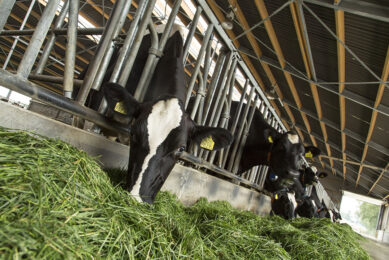Beware of the butterfat dip in grass fed cows

With cows out to grass, it is important for dairy farmers on both compositional and liquid milk supply contracts to have a nutritional strategy to support butterfat levels if they are not to lose out financially, warns Dr Donald Lawson of Ufac-UK.
“On many compositional contracts lower butterfat levels mean reduced milk price. With liquid contracts also there is often a substantial price penalty if butterfat falls below a threshold level,” he said.
Maintaining butterfat at grass is a perennial challenge due to the high oil and sugar levels in grazing grass combined with its low fibre content. This affects rumen function and depresses butterfat production. But with the correct nutritional strategy, which includes supplementation with a long fibre source to buffer the rumen, careful choice of concentrates and an appropriate fat supplement butterfat levels can be maintained.
The fat, palmitic acid C16, has been shown to have a positive effect on butterfat levels, but it has a low efficiency with a large percentage of the product passing through the cow. This is often seen as oil slicks in the dung and in slippery floors. Using a unique manufacturing process, Ufac-UK has developed a product, Buta-Cup that increases the efficiency of palmitic acid by combining it with other fatty acids and a special glucose formulation.
“Field trials have shown a consistent increase in both butterfat of up to 0.4 per cent when fed a 0.5 kg per day. Milk yield has also increased by up to 2 litres per day and cows have maintained condition essential for good herd fertility.” he said.
“A dairy farmer with a 200-cow herd, yielding 24 litres on a typical compositional supply contract feeding Buta-Cup could increase income by between £490 and £970 month after allowing for the cost of the product. A herd yielding 32 litres per cow per day could gain as much as £1,400 by making similar improvements in butterfat,” said Dr Lawson.
Related website:
Ufac











